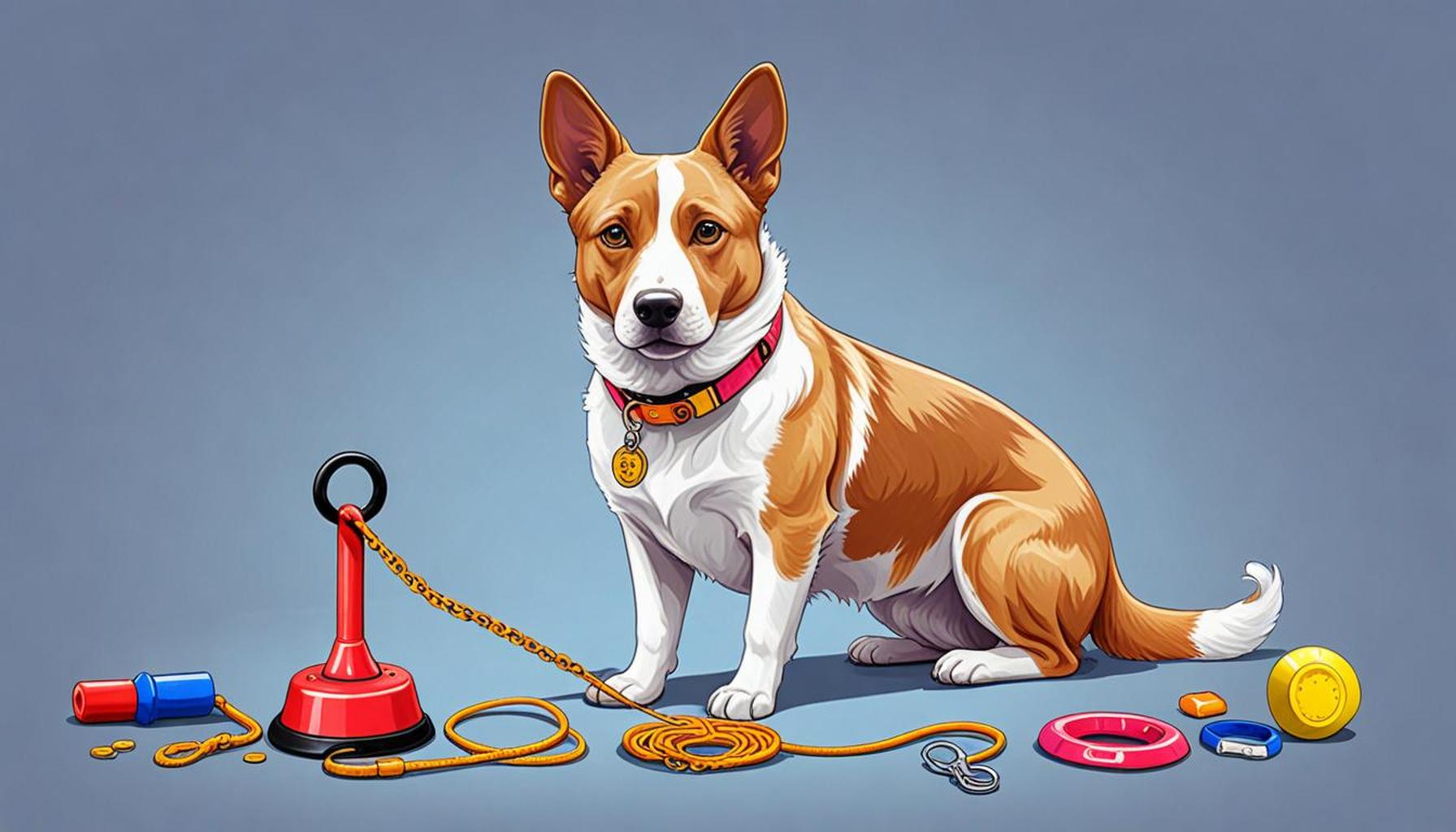The Importance of Positive Training: How to Encourage Healthy Behaviors in Cats and Dogs at Home

The Role of Positive Training in Pet Care
Pets, particularly cats and dogs, are cherished members of many Nigerian households, bringing joy and companionship to families. While their presence is often uplifting, they are also living beings that require guidance and training to fit comfortably into our lives. With behavioral challenges that arise, pet owners often find themselves seeking solutions that do not compromise the well-being of their pets. This is where positive training comes into play, offering a compassionate and effective means to nurture good behavior.
Benefits of Positive Training
Understanding the transformative benefits of positive training is essential for any pet owner looking to guide their furry friends towards better behavior. The advantages of this method extend beyond mere obedience, enriching the lives of both pets and owners alike.
- Strengthening the bond: Utilizing positive reinforcement techniques—such as offering treats, praise, or affection—fosters an environment of trust and security between the pet and their owner. For example, in Nigerian households, this could mean rewarding a dog for not barking excessively or a cat for using the litter box properly.
- Promoting mental stimulation: Training sessions can be a fun and engaging way to stimulate a pet’s mind. Activities such as teaching a dog to fetch or training a cat to perform tricks through clicker training not only bolster their cognitive skills but also channel their energy positively.
- Reducing anxiety: Pets, like humans, can experience stress and anxiety. Positive training techniques help alleviate these feelings by creating a safe space for them to learn. This is particularly crucial in the bustling urban settings of Nigeria, where loud noises and unexpected stimuli can be overwhelming for pets.
Implementing Positive Training at Home
To effectively implement positive training, pet owners can start with simple commands. Commands like “sit,” “stay,” or “come” can be taught using treats as rewards. For instance, when your dog responds correctly, immediately rewarding them with their favorite snack reinforces the desired behavior. This approach ensures that pets associate good behavior with positive outcomes.
Furthermore, it is important to be patient and consistent. Nigerian pet owners can enhance their training sessions by incorporating local customs; for example, using traditional songs or calls during training can make the practice feel more personal and engaging for the pet.
By focusing on positive reinforcement, pet owners can not only address behavioral issues effectively but also foster a loving relationship that thrives on mutual respect. As you explore these training techniques, you will undoubtedly find that the effort put into positive training reaps benefits not just for your beloved pets but for the overall harmony within your home.

LEARN MORE: This related article may interest you
Understanding the Principles of Positive Training
At the heart of positive training lies the profound understanding that animals respond better to encouragement than to punishment. This humane approach is not only scientifically validated; it reflects the intrinsic bond between pets and their owners. In Nigerian households, where both cats and dogs flourish, integrating positive training into daily routines can significantly enhance the relationship with our furry companions.
Unlike traditional methods that may rely on negative reinforcement—such as yelling or physical correction—positive training emphasizes rewards for desired behaviors. This fundamentally shifts the pet’s viewpoint from one of fear to one of joy, making training sessions something they look forward to rather than dread. Let us delve deeper into how this method works and why it is so effective.
The Psychology Behind Positive Training
Positive training is grounded in the principles of animal psychology, specifically the concept of operant conditioning. This learning theory suggests that behaviors followed by rewards are likely to be repeated. For Nigerian pet owners, it means recognizing that every good act from their pets, such as a dog lying calmly or a cat using its scratching post, is an opportunity to reinforce that behavior through praise or treats.
Research indicates that animals trained with positive reinforcement exhibit reduced signs of stress and behavioral issues. This is especially important in cities like Lagos or Abuja, where pets are often exposed to hectic environments, street noises, and unfamiliar situations. By utilizing positive reinforcement techniques, owners can cultivate a sense of safety and stability that is crucial for their pets’ mental well-being.
Key Techniques in Positive Training
Implementing positive training methods can be straightforward and enjoyable. Here are some key techniques that every pet owner can adopt at home:
- Clicker Training: This involves using a small handheld device that emits a clicking sound when the pet performs a desired behavior. Immediately following the click, a reward should be given, connecting the action to the sound.
- Treat-Based Rewards: Use small, healthy treats to reward your pet for following commands or exhibiting good behavior. For Nigerian dog owners, locally sourced treats like cooked chicken or small bits of fish can be quite motivating.
- Verbal Praise: Combining treats with enthusiastic verbal praise can amplify the effectiveness of training. Words like “good boy” or “well done” help pets associate positive feelings with their behavior.
- Consistent Commands: Using the same words for commands every time helps reinforce understanding. For example, consistently using “sit” instead of “sit down” will make learning simpler for your pet.
These techniques highlight the underlying simplicity of positive training, making it not just an effective method but also an enjoyable experience for both pets and their owners. Embracing these strategies can create a loving and nurturing environment, where pets learn healthy behaviors that align with the household’s expectations.
| Advantage | Description |
|---|---|
| Strengthens Human-Animal Bond | Positive training creates a trusting relationship between pets and their owners, leading to deeper emotional connections. |
| Reduces Behavioral Issues | By focusing on rewarding good behavior, owners can significantly diminish negative habits such as barking, scratching, or anxiety-induced issues. |
Positive training plays a crucial role in promoting healthy behaviors in both cats and dogs at home. Utilizing techniques like clicker training or reward-based methods not only makes training enjoyable for pets but also enhances their overall well-being. It is particularly vital to foster confidence in animals, helping them develop resilience to stressors in their environment. Emphasizing consistency in commands and rewards can lead to quicker learning and retention of desired behaviors. Additionally, engaging in positive training ensures that pets are stimulated mentally, preventing boredom and destructive behaviors. Furthermore, it’s essential to recognize that each animal is unique, requiring personalized techniques to cater to individual needs and personalities.Integrating positive training into daily routines helps establish a positive atmosphere that encourages good behavior, ultimately making both pets and their owners happier. Investing time and effort into positive reinforcement will undoubtedly yield lasting outcomes that benefit pets and their households alike.
LEARN MORE: This related article may interest you
Creating a Structured Training Environment
Establishing a positive training framework within the household is essential to maximizing the effectiveness of positive training. For Nigerian pet owners, creating an environment conducive to learning can be achieved through simple alterations in daily routines. Consistency, patience, and a positive atmosphere are core elements that reinforce desired behaviors in both cats and dogs.
Setting Regular Training Sessions is one of the most effective ways to cultivate healthy behaviors in pets. Short, frequent sessions—around 5 to 10 minutes—are ideal for maintaining attention and interest. Scheduling these within the daily routine, such as right after morning walks or before feeding, can help to establish a habit. In bustling cities, where distractions are abundant, a routine provides structure and clarity for both pets and owners.
Utilizing Play as a Training Tool
Moreover, incorporating playtime into training sessions can amplify engagement and enthusiasm. Playing fetch with a dog or using interactive toys for cats not only reinforces desired behaviors but also enhances the bond between the pet and owner. For instance, when your dog brings back a ball or your cat successfully navigates a puzzle feeder, rewarding them instantly can initiate a connection between play and positive reinforcement.
In households where busy lifestyles may limit the amount of time available for training, integrating these playful elements allows training to feel less like a chore and more enjoyable. This dynamic can lead to healthier behaviors, including improved obedience and socialization skills, essential for dogs and cats alike.
A Tailored Approach: Recognizing Individual Needs
Each pet is unique, and understanding individual personalities is crucial to effective training. Some pets may respond better to food rewards, while others may thrive on affection and praise. It is vital for Nigerian pet owners to observe their pets to determine what motivates them most. For example, rescue dogs may come with a history of trauma and might require a more *gentle and patient approach*, while a kitten may exuberantly respond to treats during training.
- Observe Body Language: Careful attention to how pets respond during training can provide insights into their feelings. Cats may display comfort or discomfort through their tails, while dogs may exhibit excitement or anxiousness through their ears and posture.
- Adjust Techniques Accordingly: If a certain method does not yield the desired results, don’t hesitate to modify the approach. Experimenting with different rewards, such as enticing toys or verbal praise, can lead to breakthroughs in understanding.
Furthermore, using socialization as a training strategy can cultivate their adaptability to new situations. For instance, regular interactions with other friendly pets or safe environments enhance a pet’s confidence and willingness to learn.
The Role of Routine in Reinforcement
Routine plays a pivotal role in reinforcing positive behaviors and establishing clear expectations. By integrating training commands into daily activities, owners can achieve a consistent approach toward fostering good habits. For example, always having pets sit before meals or stay while entering or exiting the door helps instill discipline while making them understand household rules.
Moreover, Nigerian pet owners can utilize cultural elements to enrich this training process. Incorporating local languages, idioms, or phrases during training sessions can create a more relatable and engaging environment for both pets and owners. This cultural touch adds warmth and individuality, enhancing the pet’s learning process.
In summary, creating a structured environment, utilizing play, recognizing individual needs, and incorporating routine strategies can significantly transform the training experience for pets and their owners in Nigeria. Through these methods, we cultivate not just trained animals but well-adjusted and trusting companions.
CHECK OUT: Click here to explore more
Conclusion
In conclusion, the journey of positive training for pets, whether cats or dogs, is both a rewarding and enriching experience that shapes their behavior and strengthens the bond between owner and animal. By embracing a structured approach that prioritizes consistency, play, and a tailored understanding of each pet’s individual needs, Nigerian pet owners can foster healthy behaviors that lead to happier, more well-adjusted companions.
Creating an environment that focuses on positive reinforcement, rather than punitive measures, is essential in developing trust and respect. The use of routines can facilitate behavioral training, effectively integrating commands into everyday life. Moreover, recognizing and celebrating the unique personality of each pet enables owners to better relate to their animals and customize their training strategies. The greater the understanding between the two, the stronger the companionship becomes.
As you embark on this training journey, remember that persistence is key. The challenges faced along the way present opportunities for growth and learning, not just for the pet but also for the owner. Adopting culturally relevant methods, incorporating local languages, and making training a part of the family routine can further enhance the experience. Through these positive practices, we not only teach our furry friends but also cultivate lifestyles enriched with mutual love, respect, and understanding.
Take the first step today by committing to a training approach that promotes health and happiness in your pets. With dedication and exploration, you will unlock a world of joy and companionship, making your home a harmonious haven for both you and your beloved animals.


